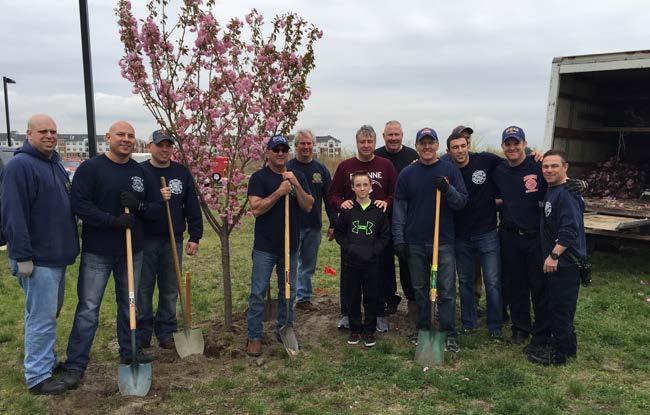
4 minute read
BranchingOut Tough times for city trees
By Pat Bonner
Throughout history, trees thrived in this area without any human help. In Colonial times, both the British and Continentals used Bayonne as a source of timber for fuel and building materials. Over time, wooded areas gave way to houses, but it wasn’t until the widespread use of automobiles that city trees were threatened. Cars must be parked, and multiple cars in a household creates a need for multiple parking spots. Over the years, a vast number of Bayonne’s street trees were replaced by carports, driveways, and concrete.
Advertisement
The city recognized that we were losing trees, and about 20 years ago, launched a program to try to protect the city’s trees. It’s rare that a city ordinance is readable, but this one does a good job of making the case for urban trees.
It reads in part: “ … The indiscriminate, uncontrolled removal and cutting of trees causes increased drainage control costs, increased soil erosion and sedimentation, decreased soil fertility, degradation of water resources, decreased ground water recharge, increased buildup of atmospheric carbon, and increased dust, which impacts the character of the City and decreases property values, all of which can adversely affect the health, safety, and general welfare of the inhabitants of the City.”
It doesn’t mention that the shade of a big tree will lower your electric bill in summer and perhaps shield you from looking at the electric cables and wires over years amassed by cable and telephone companies.
Did You Chop Down that Cherry Tree? The ordinance makes it unlawful to remove or destroy a tree in front of your house unless you obtain a permit. To obtain one, you must show that the tree is dead, diseased, or in an area to be occupied by a driveway, building, or other improvement. The permit holder must replace the tree or pay the city $250, which goes into a fund that will be used to plant trees elsewhere in the city. Tom Cotter, head of the Public Works Department and the city’s chief tree protector, has a team of four in the Forestry Department who will know when a tree has been removed unlawfully. This program has worked; over the past 20 years, the number of curbside trees has increased.
If residents want a new tree or to replace one, they can pay $250, and the city will dig up the old tree, ground the roots, and plant a new one.
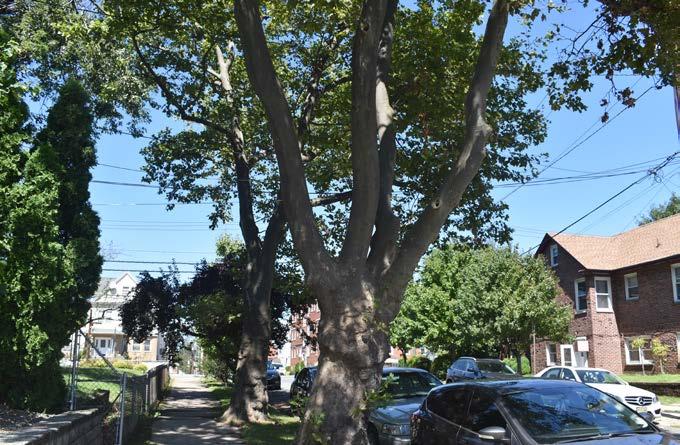
Family Tree Residents can choose from six to eight types to choose from, including thundercloud plum, dogwood, sycamore, kwan-
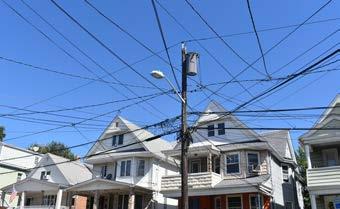
zan cherry and two types of maple. Brendan and Judy Burke of Newman Avenue are happy that they chose two autumn blaze maples to replace the two trees they lost.
The zoning board will require a developer to maintain or replace existing trees, and sometimes plant new trees before approving a new building. New businesses on Broadway also may be required to plant new trees, in addition to providing parking spaces before obtaining a permit. Broadway trees, unlike those on side streets, face a battle for survival. They need space for roots to grow. Cotter says an ideal plot for a curbside tree would be three by six feet or more. Smaller plots could hem in the roots which are blocked by the compressed soil beneath the concrete or street. Larger plots allow more space for the rain to seep in after storms. It’s better to have it go into the grass rather than down the pavement into the basement. The roots will seek out water, and if the plot is small, it could lead to a cracked sidewalk or clogged sewer lines.
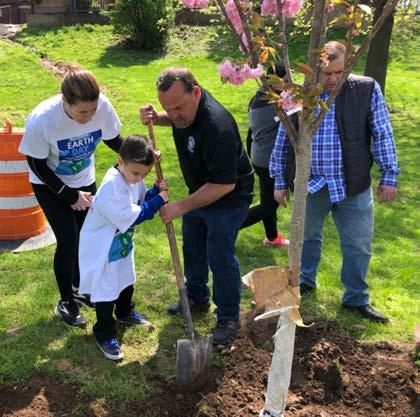
Salt of the Earth Another obstacle is rock salt or calcium chloride. Homeowner may not put it directly onto the sapling but may put it on snow or ice on the sidewalk and then shovel it into piles resting against the tree. Road salt on streets is likely to be spread as the snow and ice melts. This salt weakens the tree and can contaminate the small plot where the tree lives.
Though dogs love trees, the feeling might not be mutual. Unless dog owners pick up after their dogs, there will be overfertilization, leading to a nutrient imbalance. Frequent canine urination erodes the bark on a developing tree, allowing parasites to invade the tree. Tree experts ask dog walkers to vary their routes and not pass the same trees each day. Better yet, take your dog to a park. Your dog will like it better, and so will your neighbor’s tree. City Slickers Air quality has been an issue for trees since the start of the industrial revolution. The English tried to solve this problem by developing a hybrid of the sycamore that tolerated soot and grime. This popular tree became known as the
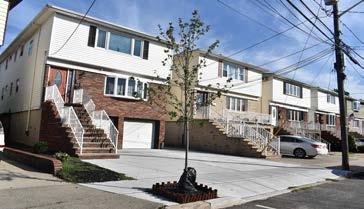

London Plane. A mainstay of U.S. urban planning in the early twentieth century, the tree is very common in Bayonne. You can recognize it by its peeling bark in late summer. It’s subject to disease, and like all urban trees is challenged by global warming and erratic rainfall.
Eventually, we will have wi-fi for everything, and all our power lines will be buried or hidden. Until then, be prepared to look at a jungle of black wires. Unless, of course, you plant a tree to block them from view.—BLP











